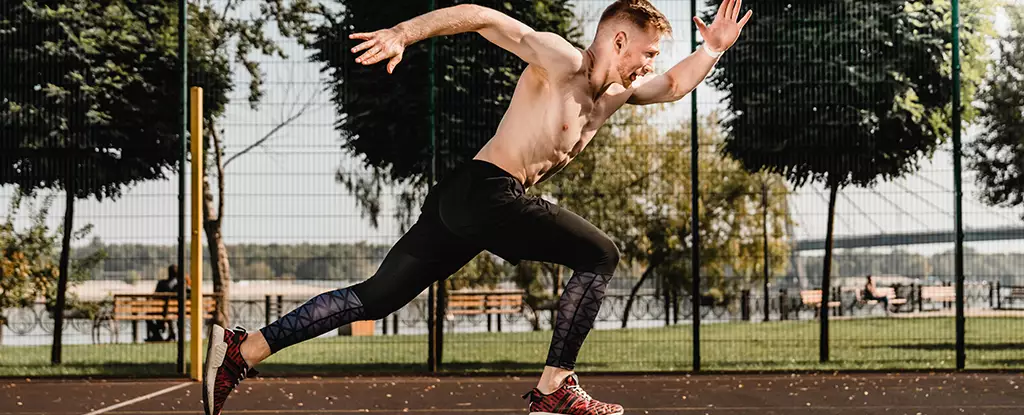In our society, exercising is often lauded as a panacea for numerous health problems, from physical ailments to psychological issues. The belief that being fit equates to being healthy is pervasive, yet recent studies reveal complexities that challenge this notion. While moderate exercise is universally praised for its health benefits, intense physical activity could paradoxically compromise the immune system. A recent study conducted on firefighters, published in 2023, illuminates this troubling dynamic and underscores the need to reassess beliefs regarding extreme exercise and its consequences.
Intense Exercise and Immune Response
Ernesto Nakayasu, a biomedical scientist at the Pacific Northwest National Laboratory (PNNL), and his team conducted an in-depth analysis of the biochemical changes that occur in firefighters after strenuous exercise. The researchers collected and analyzed biological samples derived from participants engaged in physically demanding activities, specifically evaluating the impact on their immune systems. Their findings are stark: intense physical exertion can inhibit the immune response, rendering individuals more susceptible to infections—particularly viral respiratory illnesses.
This revelation prompts an important question: Can we still advocate for extreme exercise within vocations that inherently demand high physical performance, such as firefighting and professional athletics? While it’s clear that exercise bolsters health overall, the immediate post-exercise phase may leave the body vulnerable, a nuance that should not be overlooked.
Examining the Study’s Implications
The research by Nakayasu and colleagues posited that following rigorous exercise, there were observable physiological shifts in firefighters, including a notable decrease in inflammatory activity. Inflammation is a crucial component of the immune response; thus, its suppression may directly correlate with an increased risk of infections during the recovery period. Interestingly, the study also highlighted the increase in opiorphin levels, which enhances blood flow and nutrient delivery to muscles during exercise. This response, while beneficial for muscle functionality, raises the question of whether the body is trading short-term performance for long-term health.
The researchers hypothesized that the reduction of inflammatory molecules might be an adaptive response, facilitating improved oxygen exchange amidst elevated demands during physical exertion. While this explanation invites further research, it simultaneously raises concerns around the balance between sufficient physical training and safeguarding the immune system against potential pitfalls associated with extreme efforts.
Challenges to Existing Paradigms
Compounding the intricacies of the findings is the thought-provoking reflection on the oral microbiome of the participants, which exhibited changes post-exercise. Specifically, heightened levels of antimicrobial peptides emerged as the body attempted to counteract potential immune suppression. However, as the researchers pointed out, this defense mechanism did not demonstrate efficacy against pathogens like E. coli. This finding serves as a stark reminder that while our bodies might attempt to adapt to stressors, such adaptations may not always equate to strengthened defenses.
It’s also important to note that the study’s findings are not wholly conclusive. Critics of the research argue that the observed alterations might not represent immune suppression but rather a heightened state of immune vigilance and regulation. This perspective underscores the complexity inherent in the body’s response to extreme physical stress and challenges us to rethink our assumptions.
Future Directions and Broader Implications
Moreover, the current research is limited to a population of healthy, active men, leaving substantial gaps in our understanding of how different demographics might respond to similar physical stimuli. For instance, women and individuals with varying health conditions might exhibit different immune responses, highlighting the need for broader investigations across more diverse groups. Such research could provide vital insights into how physical demands in extreme professions can be balanced without compromising health.
The take-home message from this evolving narrative is clear: despite the allure of extreme fitness, we must remain vigilant about the potential consequences of such practices on overall health. As we navigate this paradox, the call for moderate exercise remains strong, while the allure of extreme fitness deserves careful scrutiny. Acknowledging the hidden costs associated with intense exercise is crucial to fostering a culture of holistic health—where physical fitness does not come at the cost of immune resilience.
This nuanced approach could profoundly reshape how we design training regimens, particularly for those whose jobs demand exceptional physical output, reminding us that in the pursuit of health, balance is key.


Leave a Reply